Home>Garden Essentials>How To Grow Sweet Potatoes So You Have Greenery In The Summer


Garden Essentials
How To Grow Sweet Potatoes So You Have Greenery In The Summer
Modified: March 7, 2024
Learn how to grow sweet potato in your garden and enjoy the lush greenery all summer long. Discover expert tips and techniques.
(Many of the links in this article redirect to a specific reviewed product. Your purchase of these products through affiliate links helps to generate commission for Storables.com, at no extra cost. Learn more)
Introduction
Welcome to the world of sweet potatoes, where vibrant green vines and delicious tubers reign supreme. Growing your own sweet potatoes can be a rewarding and fulfilling experience, as you watch your garden come to life with lush foliage and bountiful harvests.
In this article, we will explore the intricacies of growing sweet potatoes, from selecting the right variety to maintaining the plants during the summer months. Whether you are an experienced gardener or a novice, we will guide you through the process, providing valuable insights and tips along the way.
Sweet potatoes, botanically known as Ipomoea batatas, are a starchy root vegetable that are prized for their sweet flavor and nutritious value. They are native to Central and South America and have been cultivated for thousands of years. Today, they are a staple crop in many countries around the world, including the United States, China, and Nigeria.
One of the reasons why sweet potatoes are popular among gardeners is their versatility. They can be enjoyed in a variety of ways, whether roasted, mashed, baked, or even turned into savory fries. Plus, they are packed with essential vitamins and minerals, making them a healthy addition to any balanced diet.
Now that we have piqued your interest, it’s time to delve into the world of sweet potato cultivation. Whether you have a spacious garden or just a small balcony, you can bring the magic of sweet potatoes to your own space. So, put on your gardening gloves, grab your trowel, and let’s get started on this green adventure!
Key Takeaways:
- Growing sweet potatoes is a fun and rewarding adventure. Choose the right variety, provide plenty of sunlight, and maintain the soil to enjoy a bountiful harvest of delicious tubers.
- During the summer, sweet potato vines need care. Water them well, keep an eye out for pests and diseases, and get ready for a satisfying harvest.
Read more: How To Grow Grass In The Summer
Understanding Sweet Potatoes
Before you embark on your sweet potato growing journey, it’s important to gain a deeper understanding of the plant itself. Sweet potatoes are perennial vines that belong to the morning glory family, Convolvulaceae. They have heart-shaped leaves and produce vibrant flowers in shades of white, pink, and purple. However, it’s the underground tubers that are the true stars of the show.
Contrary to what their name suggests, sweet potatoes are not actually potatoes, but rather a root vegetable. They come in a variety of colors, including orange, white, and purple. The color of the flesh depends on the variety and can have different levels of sweetness and moisture content.
Sweet potatoes are known for their ability to thrive in warm climates, making them a popular choice for gardeners in tropical and subtropical regions. They require a long growing season, typically around 90-120 days, to reach maturity. In cooler climates, it’s possible to still grow sweet potatoes by starting them indoors and transplanting them outside after the threat of frost has passed.
In terms of nutritional value, sweet potatoes are a powerhouse. They are rich in dietary fiber, vitamins A and C, and an array of minerals such as potassium and manganese. They are also a great source of antioxidants, which help protect against cell damage and promote overall health.
It’s important to note that sweet potatoes can be divided into two main categories: “sweet” and “firm”. Sweet varieties are typically softer and moister, while firm varieties have a drier, starchier texture. The choice between the two depends on personal preference and the desired culinary use.
Now that you have a better understanding of sweet potatoes, it’s time to move on to the next step: choosing the right variety. Let’s explore the exciting world of sweet potato varieties and find the perfect one for your garden.
Choosing the Right Variety
When it comes to sweet potatoes, there is no shortage of variety. From the classic orange-fleshed varieties to the unique purple and white-fleshed options, there is something to suit every taste and preference. Choosing the right variety for your garden involves considering factors such as flavor, texture, yield, and growing conditions.
Here are some popular sweet potato varieties to consider:
- Bonita: This variety is known for its high yields and excellent disease resistance. It has a vibrant orange flesh with a sweet and creamy flavor.
- Jewel: Jewel is a popular choice for its moist and sweet orange flesh. It is a high-yielding variety that performs well in a wide range of growing conditions.
- Garnet: With its deep red skin and orange flesh, the Garnet sweet potato is not only visually striking but also packed with flavor. It has a sweet and slightly drier texture compared to other varieties.
- Hannah: If you prefer a sweeter and less starchy sweet potato, the Hannah variety is an excellent choice. It has a pale yellow flesh and a delicate flavor that is perfect for roasting or baking.
- Korean Purple: For something a little different, consider growing the Korean Purple sweet potato. It has vibrant purple skin and flesh, and a slightly drier texture with a nutty flavor.
When choosing a variety, consider your climate and growing conditions. Some varieties are more suited for cooler climates, while others thrive in warmer regions. It’s also a good idea to check with local gardening experts or nurseries to see which varieties perform well in your specific area.
Additionally, keep in mind your culinary preferences. Some varieties are better suited for roasting and baking, while others work well in soups and stews. Experimenting with different varieties can add excitement and variety to your meals.
Now that you’ve chosen the perfect sweet potato variety, it’s time to move on to the next step: selecting the ideal location for planting. Let’s explore the factors to consider when finding the best spot for your sweet potatoes to thrive.
Selecting the Ideal Location for Planting
For sweet potatoes to flourish, selecting the right location for planting is crucial. They require plenty of sunlight, well-drained soil, and sufficient space to grow their sprawling vines. Here are some factors to consider when choosing the ideal spot:
- Sunlight: Sweet potatoes thrive in full sun, so choose a location that receives at least 6-8 hours of direct sunlight daily. Avoid planting them in areas shaded by trees, buildings, or other structures that can block the sunlight.
- Soil Drainage: Sweet potatoes prefer loose, well-drained soil. They do not tolerate waterlogged conditions and can rot if their roots are constantly sitting in water. Avoid low-lying areas that tend to retain water, and consider adding organic matter, such as compost or well-rotted manure, to improve soil drainage.
- Soil pH: Sweet potatoes prefer a slightly acidic to neutral soil pH range of 5.8-6.5. Conduct a soil test to determine the pH of your soil and make any necessary adjustments by adding lime to raise the pH or sulfur to lower it.
- Space: Sweet potato vines can spread out extensively, with each plant producing multiple runners. Ensure you have enough space for the vines to sprawl without overcrowding. A spacing of 12-18 inches between plants and 3-4 feet between rows is generally recommended.
- Protection from Wind: Strong winds can damage the delicate vines of sweet potatoes. Consider planting them in an area that is sheltered from strong gusts, such as behind a windbreak or near a fence.
It’s also worth noting that sweet potatoes can be successfully grown in containers or raised beds, which allows for better control of soil conditions and easier harvesting. If you choose to grow them in containers or raised beds, ensure they are large enough to accommodate the spreading vines and have proper drainage holes.
Before planting, prepare the soil by removing any weeds, rocks, or debris. Loosen the soil to a depth of 8-10 inches using a garden fork or tiller. Incorporate organic matter, such as compost or aged manure, into the soil to improve its fertility and structure. This will provide the sweet potatoes with the nutrients they need for healthy growth.
Now that you have selected the perfect location, it’s time to prepare the soil and get ready to plant your sweet potato slips. Let’s dive into the next step in the process: preparing the soil.
Preparing the Soil
Preparing the soil is a vital step in ensuring the success of your sweet potato crop. A well-prepared soil provides the necessary nutrients, drainage, and structure that sweet potatoes need to thrive. Here are some tips for preparing the soil:
- Clear the area: Start by clearing the planting area of any weeds, rocks, or debris. Remove any large clumps of soil and smooth out the surface.
- Loosen the soil: Sweet potatoes prefer loose and well-drained soil. Use a garden fork or tiller to loosen the soil to a depth of 8-10 inches. This improves aeration and allows the roots to penetrate the soil more easily.
- Incorporate organic matter: Add organic matter, such as compost or well-rotted manure, to enrich the soil. This improves its fertility, structure, and water-holding capacity. Spread a layer of compost or manure over the planting area and mix it into the loosened soil.
- Adjust soil pH: Sweet potatoes prefer slightly acidic to neutral soil with a pH range of 5.8-6.5. If your soil pH is outside of this range, adjust it accordingly by adding lime to raise the pH or sulfur to lower it. Follow the instructions on the product packaging and retest the soil after making adjustments.
- Address nutrient deficiencies: Conduct a soil test to determine the nutrient levels in your soil. Based on the results, amend the soil with appropriate fertilizers to address any deficiencies. Choose a balanced fertilizer with equal proportions of nitrogen, phosphorus, and potassium (NPK).
Once you have prepared the soil, allow it to settle for a few days before planting. This gives the organic matter time to decompose and integrate with the soil, providing a nutrient-rich environment for your sweet potatoes.
Remember to consider the climate and growing conditions in your area when preparing the soil. If you have heavy clay soil, adding organic matter will improve its drainage. If you have sandy soil, adding organic matter will help improve its water-holding capacity and fertility.
Now that your soil is prepared and enriched, it’s time to move on to the next step: choosing the propagation method for your sweet potatoes. Let’s explore the different methods you can use to start growing your sweet potatoes.
Read more: How To Grow Potato Seeds
Propagation Methods
When it comes to growing sweet potatoes, there are a few different propagation methods you can choose from. Each method has its own advantages and can be adapted to suit your personal preferences and available resources. Here are the most common propagation methods for sweet potatoes:
- Slips: Slips are small plant starts that are grown from sprouted sweet potato tubers. To produce slips, you can either purchase certified disease-free sweet potato slips from nurseries or garden centers or start your own from a mature sweet potato tuber. To start your own slips, place the sweet potato in a jar filled with water, suspended by toothpicks. Keep the jar in a warm and well-lit area, and within a few weeks, you should see sprouts emerging from the top of the tuber. Once the slips are around 6-8 inches long, they are ready to be planted in the soil.
- Root Cuttings: Another propagation method is using root cuttings. This method involves taking small sections of sweet potato tubers with budding or sprouting eyes and planting them directly into the soil. Ensure that each root cutting has at least one eye, as this is where new growth will emerge. Plant the root cuttings about 3-4 inches deep in the soil.
- Vine Cuttings: Alternatively, you can propagate sweet potatoes through vine cuttings. This method involves taking cuttings from mature sweet potato vines and planting them directly into the soil. To do this, select healthy and disease-free vine cuttings that are around 6-8 inches long. Remove the lower leaves from the cutting, leaving only a few at the top. Plant the vine cutting in a well-prepared soil, burying it about 2-3 inches deep.
Regardless of the propagation method you choose, it’s important to allow the slips or cuttings to properly establish in the soil before watering them. This encourages the development of robust root systems, which in turn results in healthier and more productive sweet potato plants.
Now that you have propagated your sweet potato slips or cuttings, it’s time to plant them in the prepared soil. Let’s move on to the next step: planting the sweet potato slips.
To grow sweet potatoes for greenery in the summer, plant them in well-draining soil in a sunny spot. Keep the soil consistently moist and fertilize with a balanced fertilizer. Harvest the leaves as needed for a tasty addition to summer salads.
Planting the Sweet Potato Slips
Now that you have your sweet potato slips ready, it’s time to plant them in the prepared soil. Proper planting techniques and spacing ensure optimal growth and yield. Follow these steps to plant your sweet potato slips:
- Timing: Wait until the soil temperature has warmed to at least 60°F (15.5°C) before planting your sweet potato slips. This is typically when the threat of frost has passed, and the weather is consistently warm.
- Spacing: Sweet potatoes require adequate space to grow and spread. Plant the slips in rows, with a spacing of 12-18 inches between plants and 3-4 feet between rows. This allows enough room for the vines to spread and prevents overcrowding.
- Planting depth: Dig a hole in the soil that is deep enough to accommodate the roots of the slip. Place the slip in the hole, making sure that the bottom few leaves are above the soil level. Gently backfill the hole, covering the roots while leaving the top portion of the slip exposed.
- Watering: After planting, water the slips thoroughly to settle the soil around the roots and provide moisture to the newly planted plants. Watering is especially important during the first few weeks after planting to promote root establishment.
- Mulching: Apply a layer of organic mulch, such as straw or wood chips, around the plants. Mulching helps suppress weeds, conserve soil moisture, and regulate soil temperature. Leave a small space around the base of the plants to prevent moisture retention and potential rot.
It’s important to note that sweet potato vines are vining plants that can spread out extensively. To maximize space utilization and increase yield, some gardeners practice trellising the vines. This involves providing a support structure, such as a trellis or wire mesh, for the vines to climb on. This method can be particularly useful when growing sweet potatoes in limited space.
Once your sweet potato slips are planted, continue to monitor the moisture levels in the soil and water as needed. Avoid overwatering, as sweet potatoes are susceptible to rot in wet conditions. Additionally, be mindful of weeds and remove them regularly to avoid competition for nutrients and water.
With your sweet potato slips planted and cared for, it’s time to focus on their maintenance needs. In the next section, we will explore watering, fertilizing, and other important aspects of sweet potato care.
Watering and Fertilizing
Watering and fertilizing are essential components of sweet potato care. Proper watering ensures that the plants receive enough moisture to grow and produce a good harvest, while fertilizing provides the necessary nutrients for healthy plant development. Here are some tips for watering and fertilizing sweet potatoes:
- Watering: Sweet potatoes require consistent and adequate moisture, especially during the first few weeks after planting when the roots are establishing. Water the plants deeply, ensuring that the soil is moist but not waterlogged. Aim to provide around 1 inch of water per week, either through rainfall or irrigation. Monitor the soil moisture levels regularly and adjust watering accordingly based on the weather conditions.
- Timing: Watering in the mornings is ideal, as it allows the foliage to dry before evening, reducing the risk of fungal diseases. Avoid overhead watering or getting the foliage wet, as this can lead to leaf diseases and root rot.
- Fertilizing: Sweet potatoes are heavy feeders and benefit from regular fertilization throughout the growing season. Before planting, incorporate organic matter, such as compost or well-rotted manure, into the soil as a source of nutrients. Additionally, you can apply a balanced organic fertilizer, such as a 10-10-10 or 14-14-14 blend, at planting time to provide a nutrient boost. Avoid excessive nitrogen fertilization, as this can result in lush foliage growth at the expense of tuber production. Instead, focus on balanced fertilizers that provide a mix of essential nutrients.
- Side-dressing: As the sweet potato plants grow, consider side-dressing the plants with additional fertilizer about 4-6 weeks after planting. Apply a small amount of balanced fertilizer, following the package instructions, alongside the planting rows, keeping it a few inches away from the plants. This provides a supplemental source of nutrients as the plants continue to develop.
- Organic fertilizers: If you prefer organic methods, you can use natural fertilizers such as compost, worm castings, bone meal, or fish emulsion to nourish your sweet potatoes. These organic options provide slow-release nutrients and help improve soil fertility over time.
Remember to always follow the instructions on the fertilizer packaging and avoid overfertilization, as this can lead to nutrient imbalances and plant stress. Regularly monitor the plants for any signs of nutrient deficiencies, such as yellowing leaves or stunted growth, and adjust your fertilization practices accordingly.
In addition to watering and fertilizing, it’s important to stay vigilant against pests and diseases that can affect sweet potatoes. In the next section, we will discuss common pests and diseases and how to manage them effectively.
Managing Pests and Diseases
Like any other plant, sweet potatoes are susceptible to a variety of pests and diseases. However, with proper monitoring and proactive measures, you can effectively manage these challenges and protect your crop. Here are some common pests and diseases that affect sweet potatoes, along with ways to manage them:
- Sweet Potato Weevils: These small beetles are a major pest of sweet potatoes. They lay their eggs on the vines, and the larvae bore into the tubers, causing damage. To control weevils, monitor your plants regularly and remove any infested vines or tubers. Additionally, rotate your sweet potato crop every year to minimize the risk of weevils.
- Wireworms: These slender, yellow-brown worms feed on the sweet potato roots, causing stunted growth and yield loss. To manage wireworms, practice good soil sanitation by removing debris and cultivating the soil to disrupt their lifecycle. You can also apply beneficial nematodes or use organic pesticide options targeted specifically for wireworm control.
- Fungal Diseases: Sweet potatoes can be susceptible to fungal diseases such as powdery mildew and black rot. To prevent fungal diseases, ensure good air circulation around the plants by properly spacing them and pruning any dense foliage. Avoid overhead irrigation and water plants at the base to keep the foliage dry. In severe cases, you can apply fungicides labeled for sweet potatoes, following the instructions carefully.
- Root-Knot Nematodes: These microscopic worms can cause root damage and reduce the yield of sweet potatoes. To manage nematodes, practice crop rotation by avoiding planting sweet potatoes in the same spot for at least three years. Incorporating organic matter into the soil can also help suppress nematode populations.
It’s important to regularly inspect your sweet potato plants for any signs of pests or diseases. Early detection allows for prompt action, minimizing the potential damage. Consider implementing preventative measures such as using row covers, applying organic insecticides or pesticides, and practicing good garden hygiene.
In addition to managing pests and diseases, routine maintenance tasks such as weeding, monitoring for nutrient deficiencies, and providing support for trailing vines (if necessary) are essential for the overall health and productivity of your sweet potato plants.
With vigilance and proper management techniques, you can keep your sweet potato crop thriving and protect it from potential threats. But all your efforts will be rewarded when it comes time for the long-awaited harvest. In the next section, we will discuss harvesting and storing your sweet potatoes.
Read more: What Greenery Will Grow In Winter
Harvesting and Storing Sweet Potatoes
Harvesting sweet potatoes is a gratifying moment for any gardener. The anticipation of enjoying the delicious and nutritious tubers you have nurtured is well worth the wait. Here are some guidelines to ensure a successful harvest and proper storage of your sweet potatoes:
- Timing: Sweet potatoes are usually ready to be harvested when the foliage begins to turn yellow and die back, typically around 90-120 days after planting. It’s essential to harvest before the first frost, as cold temperatures can damage the tubers.
- Loosening the Soil: Before harvesting, gently loosen the soil around the plants using a garden fork or shovel. Be careful not to puncture or damage the tubers while doing so.
- Harvesting: Carefully lift the sweet potato plants from the ground, holding the vines near the base to minimize any damage to the tubers. Shake off the excess soil, but do not wash the sweet potatoes at this stage, as moisture can promote rotting during storage.
- Curing: To improve the sweetness and extend the storage life of your sweet potatoes, they need to go through a curing process. Place the harvested tubers in a warm and humid environment with temperatures around 85-90°F (29-32°C) and humidity around 85-90% for 10-14 days. This allows the skins to harden and any minor cuts or scratches to heal.
- Storage: After curing, store your sweet potatoes in a cool, dry, and well-ventilated location. A temperature between 55-60°F (13-16°C) is considered ideal for long-term storage. Avoid storing them in the refrigerator, as the cold temperature can negatively affect their flavor and texture. Instead, opt for a basement, cellar, or pantry that provides the right conditions.
- Container Storage: If you have a small harvest or limited storage space, you can store sweet potatoes in containers. Choose well-ventilated containers such as crates or mesh bags to allow for air circulation. Place the sweet potatoes in a single layer to prevent crushing and store them in a cool, dark area.
- Regular Check-ups: Periodically inspect your stored sweet potatoes to remove any that show signs of spoilage or rot. This prevents the spread of disease and maintains the overall quality of the stored tubers.
Properly cured and stored sweet potatoes can last for several months, allowing you to enjoy the fruits of your labor well into the winter months. Just remember to use the harvested tubers with any visual signs of decay promptly to avoid compromising the quality of the remaining crop.
With your sweet potatoes harvested and securely stored, you can relish in the hard work and dedication that went into growing your own delicious and nutritious tubers. The next section will provide some tips for maintaining your sweet potato vines during the summer months.
Maintaining Sweet Potato Vines during the Summer
During the summer months, sweet potato vines require ongoing care and attention to ensure healthy growth and a productive harvest. Here are some essential tips for maintaining your sweet potato vines:
- Watering: Sweet potato vines benefit from consistent moisture during the hot summer months. Water deeply and thoroughly, allowing the soil to dry slightly between waterings. Ensure that the soil is moist but not overly saturated, as excess moisture can lead to root rot. Mulching around the plants helps conserve soil moisture and suppresses weed growth.
- Weeding: Regular weeding is important to prevent competition with weeds for nutrients and water. Weeds can also harbor pests or diseases that can affect the health of your sweet potato vines. Gently remove any weeds from around the plants, taking care not to disturb the delicate root systems.
- Supporting Vines (Optional): If you notice that your sweet potato vines are sprawling excessively or taking up too much space, you may consider providing support. Use garden stakes, trellises, or a wire mesh to help train the vines to grow vertically. This method can maximize space utilization, improve airflow, and make harvesting easier.
- Pruning: Although sweet potato vines tend to have a sprawling growth habit, you can prune them selectively to manage their size and encourage better airflow. Trim back any overly long or unruly vines, taking care not to remove too much foliage that provides much-needed shade for the developing tubers.
- Monitoring for Diseases and Pests: Regularly inspect your sweet potato vines for signs of pests or diseases. Look for abnormalities such as discolored leaves, wilting, or signs of insect damage. Early detection allows for prompt intervention, reducing the risk of widespread infestations or severe damage.
- Fertilizing: During the summer, sweet potato vines benefit from additional nutrition to support their vigorous growth. Side-dress the plants with a balanced organic fertilizer or apply a diluted liquid fertilizer according to the product instructions. Avoid excessive nitrogen, as it can promote foliage growth over tuber development.
- Shading Tubers: In regions with very hot summers, you may choose to partially shade the developing tubers with straw, hay, or lightweight row covers. This protects the tubers from excessive heat and prevents sunscald. Ensure that adequate airflow is maintained around the plants to prevent excessive humidity and fungal issues.
By following these maintenance practices, you can help your sweet potato vines thrive throughout the summer months. Stay vigilant, address any issues promptly, and enjoy watching your vines grow and produce an abundance of flavorful tubers.
As the summer draws to a close, you can look forward to the exciting harvest season, where you can reap the rewards of your hard work and dedication. With proper care and maintenance, your sweet potato garden will continue to bring you joy and delicious harvests for years to come.
And there you have it—everything you need to know about growing, maintaining, and harvesting sweet potatoes. We hope you found this comprehensive guide helpful and inspiring. Happy gardening!</p
Conclusion
Growing sweet potatoes can be a delightful and rewarding endeavor. From the moment you plant those tiny slips or cuttings to the day you harvest the flavorful tubers, the journey is filled with anticipation and satisfaction. Through this comprehensive guide, we have covered the essential aspects of sweet potato cultivation, from understanding the plant to maintaining it throughout the summer months.
We explored the diversity of sweet potato varieties and how to choose the right one for your garden. We discussed the importance of selecting the ideal location and preparing the soil to provide the best conditions for your sweet potatoes to thrive. Propagation methods, such as using slips or cuttings, were also explained to help you start your sweet potato journey.
Furthermore, we discussed the significance of watering and fertilizing your sweet potato plants, as well as managing pests and diseases that may threaten their growth. We learned the proper techniques for harvesting the tubers and storing them to enjoy their flavors long after the growing season comes to an end.
Finally, we explored the importance of maintaining sweet potato vines during the summer months, addressing tasks such as watering, weeding, supporting vines, and monitoring for pests and diseases. These practices ensure the health and productivity of your sweet potato plants.
Now armed with knowledge and guidance, it’s time for you to embark on your sweet potato adventure. Whether you have a large garden or just a small space, sweet potatoes can bring a vibrant burst of greenery and a bountiful harvest to your summer days.
So, roll up your sleeves, grab your tools, and let the captivating journey of sweet potato cultivation begin. With patience, care, and a dash of green thumb, you’ll soon be rewarded with the delightful taste of your own homegrown sweet potatoes.
Remember, gardening is not just about the end result; it is about the joy and connection with nature that it brings. Enjoy the process, embrace the challenges, and revel in the beauty of nurturing a garden. Happy sweet potato growing!
Frequently Asked Questions about How To Grow Sweet Potatoes So You Have Greenery In The Summer
Was this page helpful?
At Storables.com, we guarantee accurate and reliable information. Our content, validated by Expert Board Contributors, is crafted following stringent Editorial Policies. We're committed to providing you with well-researched, expert-backed insights for all your informational needs.
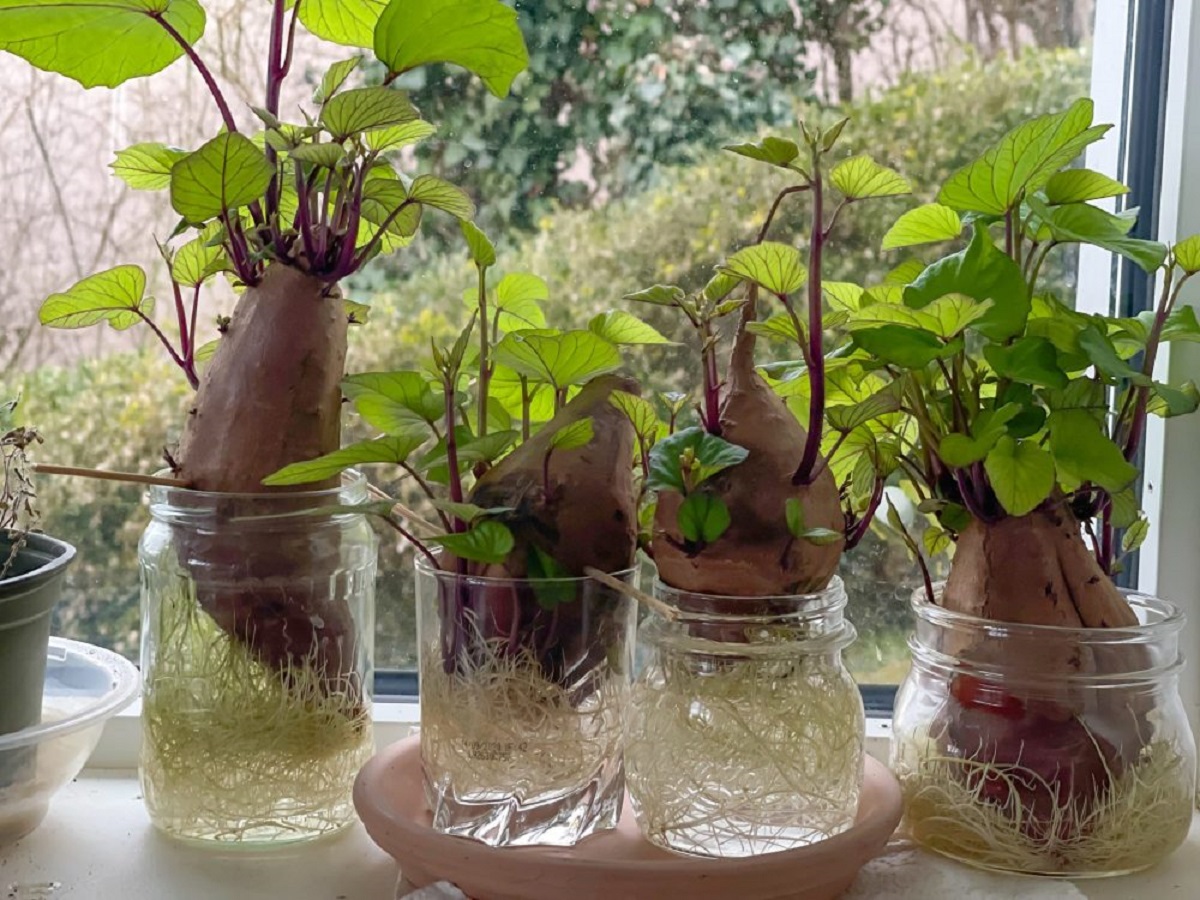

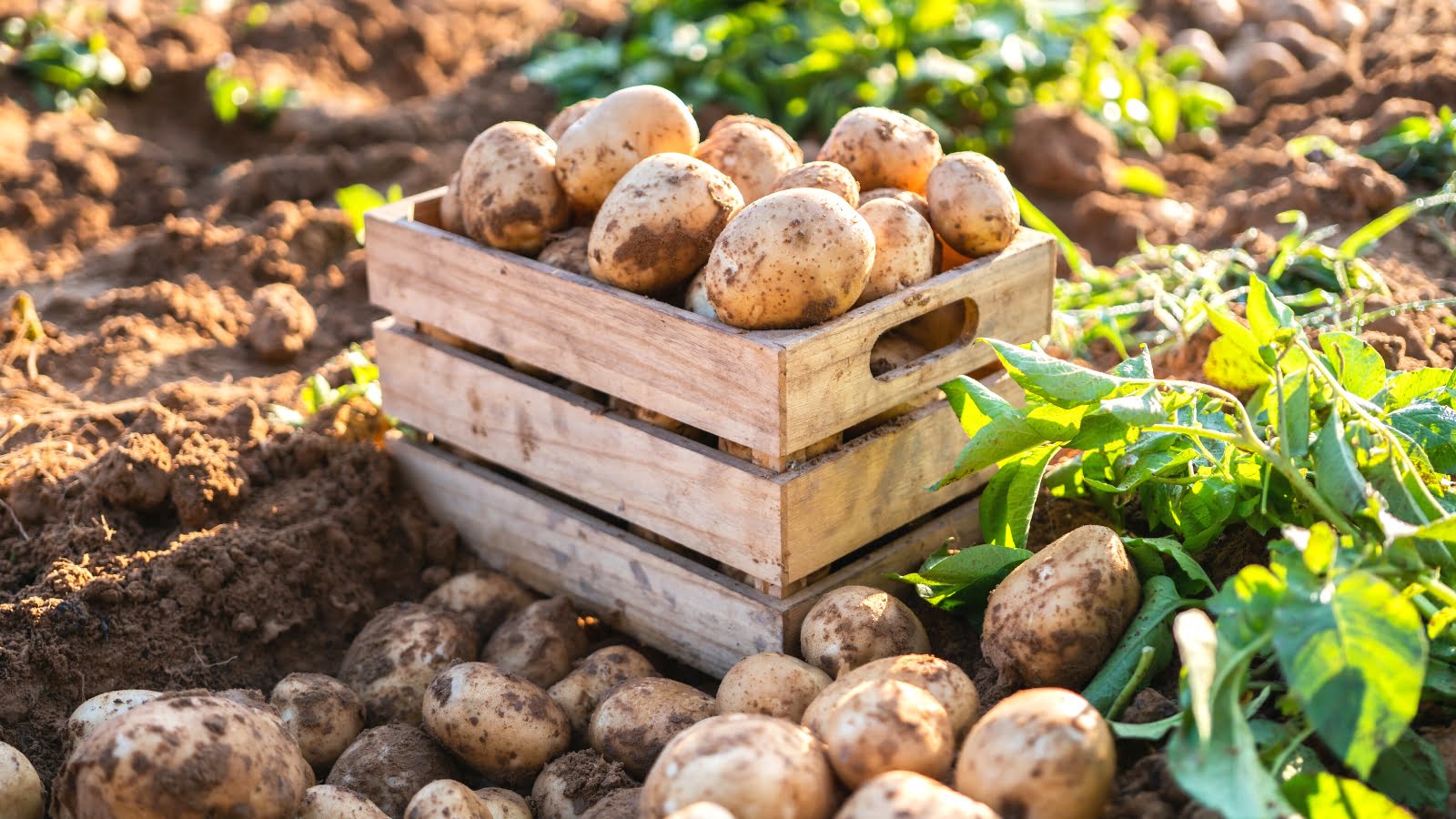
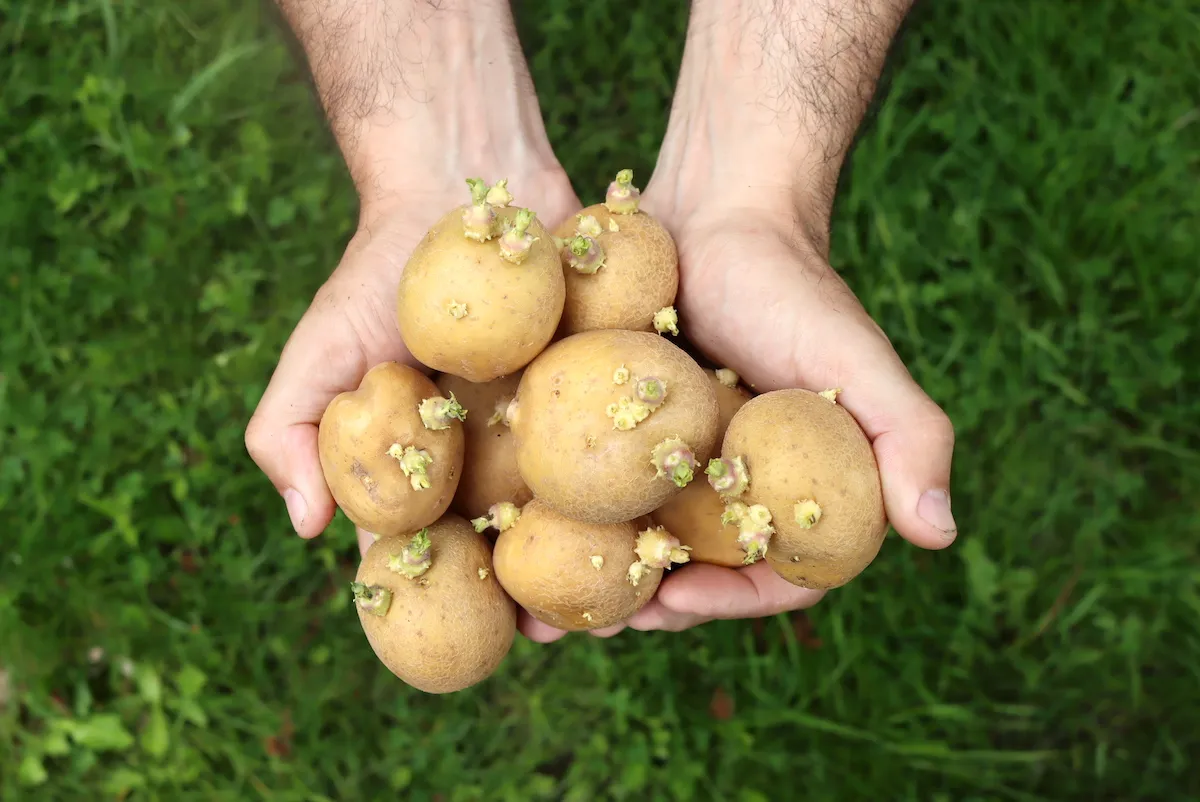
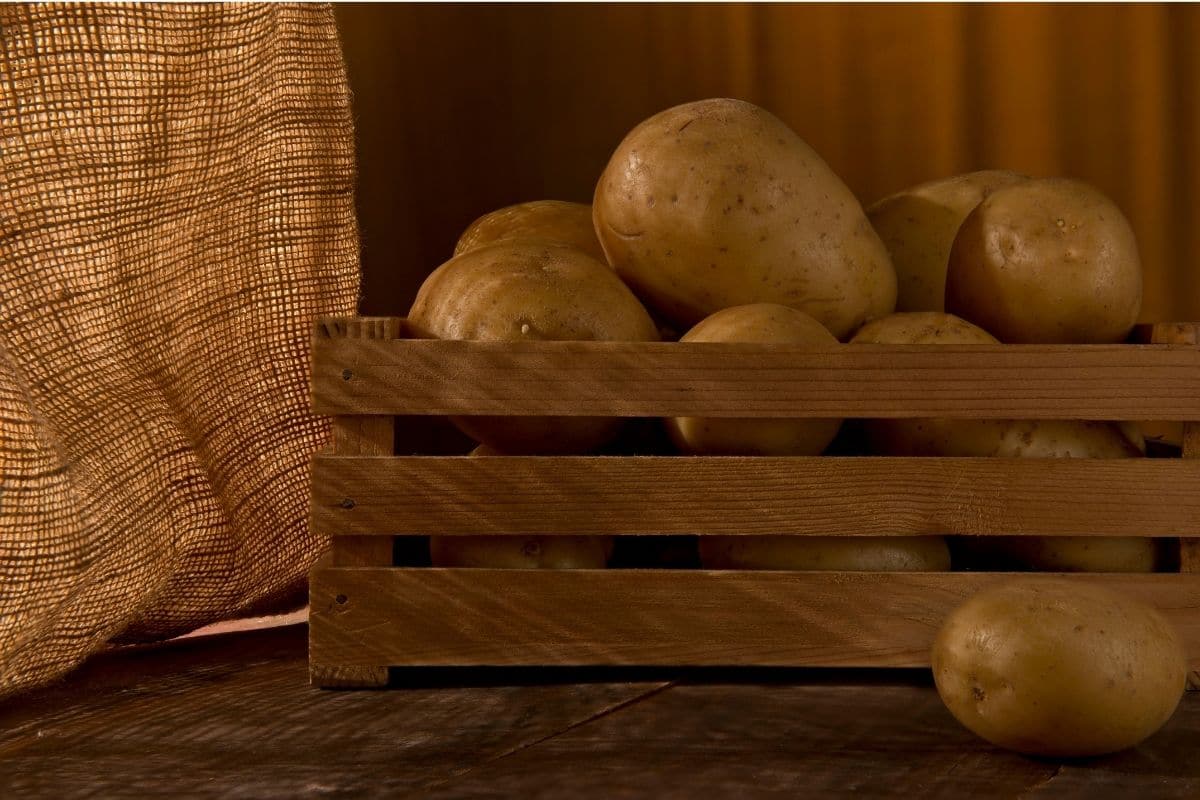


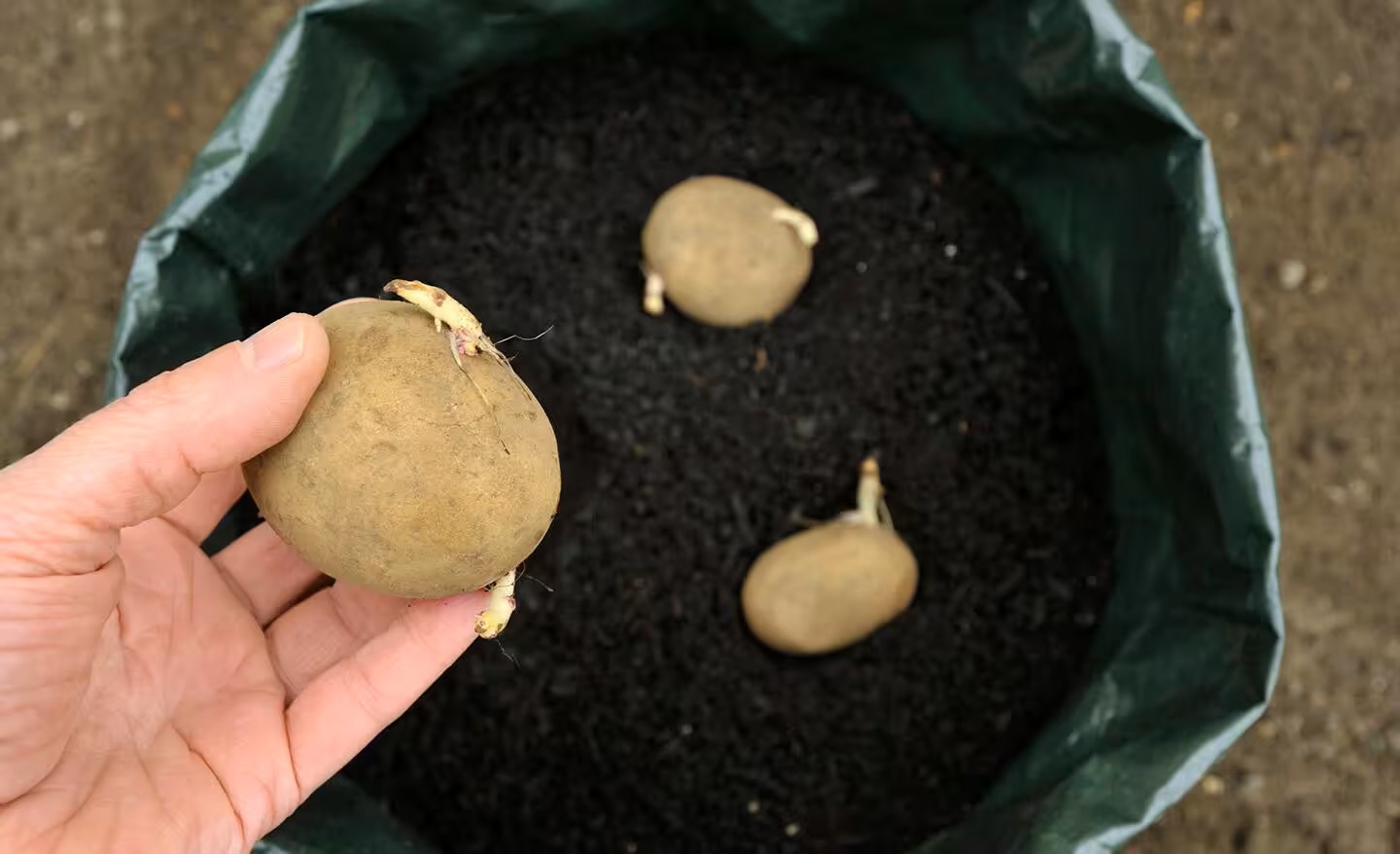
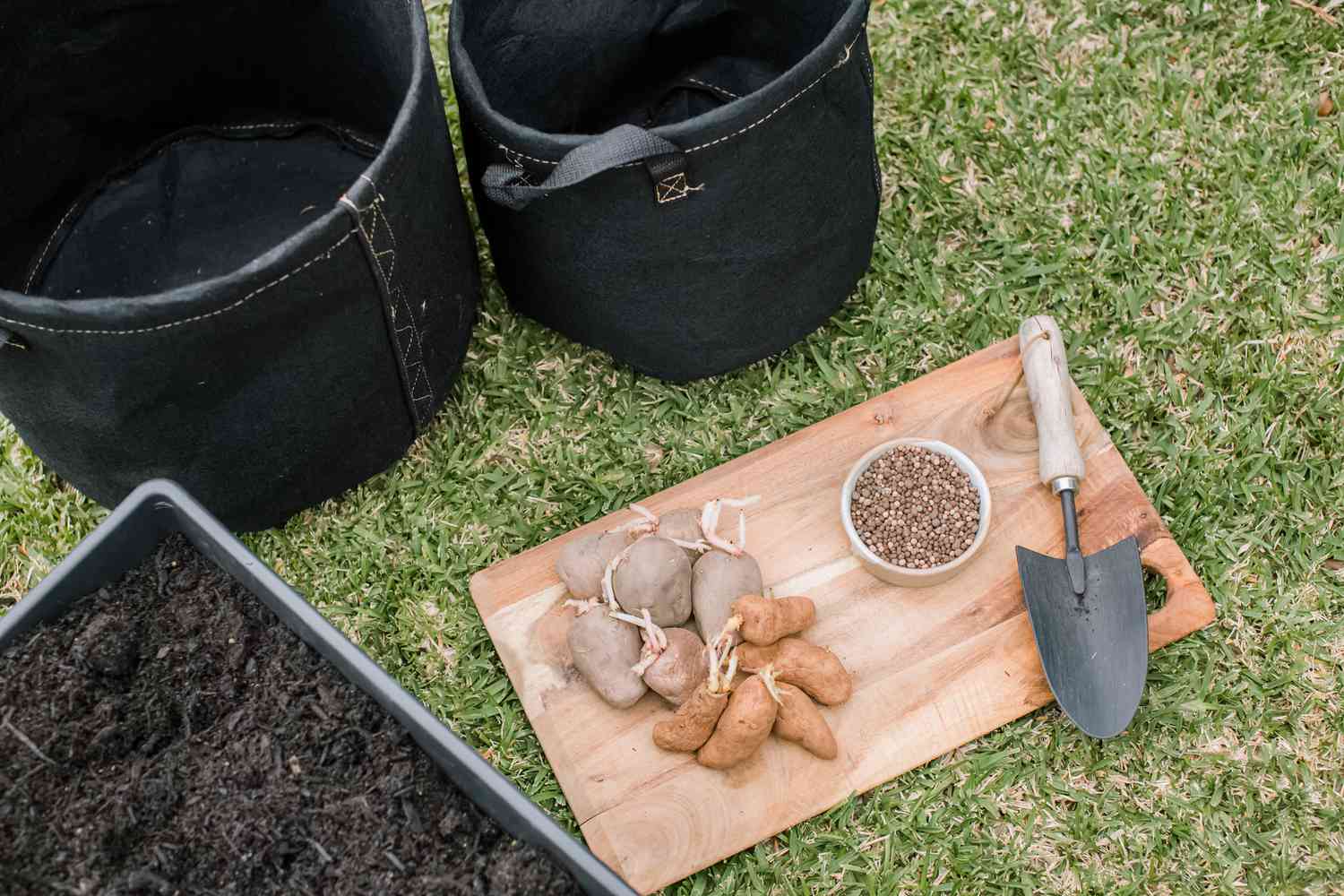
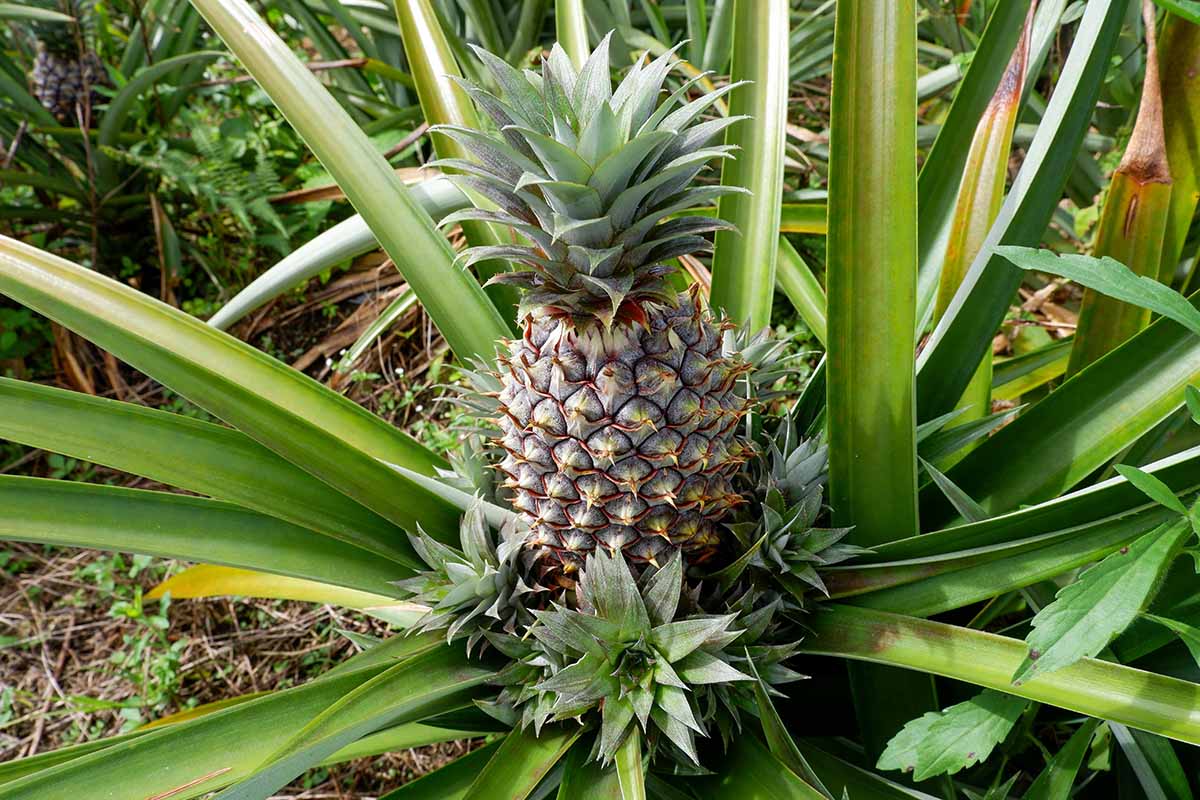




0 thoughts on “How To Grow Sweet Potatoes So You Have Greenery In The Summer”